November 2019 | Darchula
Background:
OLE Nepal’s laptop program was introduced in fifteen schools in Darchula in August 2018, with the deployment of laptops after the completion of seven day initial teacher training program for 59 teachers in August 12-18, 2018. Our field team also traveled to all schools to install digital library servers in September 2018 and provide technical support. Four months after the laptop program was launched, our training team visited all 15 schools for the in-school training program, which entails observing the classes of each teacher who participated in the basic teacher training and joined the school thereafter. In addition, four teaching residents were assigned to support all 15 schools for a period of four months on a rotation basis, to support students and teachers.
In order to check the effectiveness of the program on student learning (specifically in math, science and English subjects), we had conducted two sets of surveys, with the baseline survey done in August 19-25, 2018 (before the introduction of digital resources and laptops at the schools), and the midline survey in September 2019 (after one year of program launch).
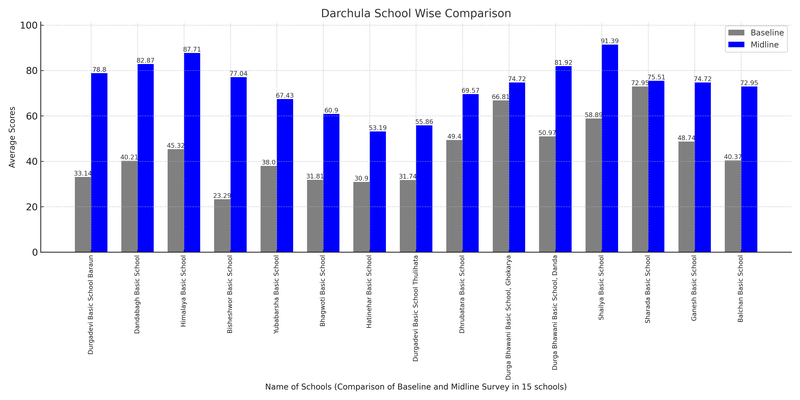
Methodology:
The baseline survey was conducted among students from grade two to four of all 15 program schools. A group of 15 students from each grade were randomly picked to take the survey in three subjects, and students were further sub-grouped to five students for each subject. If there were less than 15 students in a class, all the students were equally divided into 3 groups. Students were allowed an hour to complete the survey questions that consisted of multiple choice questions. Students from younger grades were guided by the enumerator or the teachers. They read the questions to the students as they might have had problems in reading the instructions. They were also given examples on how to mark the answers of their choice from the set of multiple choice questions. The baseline survey was jointly administered by the respective school teachers and the OLE Nepal volunteers. Similarly, after one year, a midline survey with the same set of questions was conducted among students of the same grades. The midline survey was conducted by the respective school teachers and OLE Nepal’s teaching residents. In total, 383 students took the survey in all 15 schools from grade two to four. Among them, 55% were girls and 45% were boys.

There were variations in the number of students according to the grade and subjects while dividing equal numbers for all subjects in each grade. At the time of dividing equal number of students in each subject, we have excluded or minimized an extra number of students in analysis, and were done randomly on the basis of serial number (not relevant with obtained marks). For instance, if a test taker took the test of 13 students, then there is a difference in number for different subjects at that time, we have excluded one person from analysis to balance equal number (4 students) in each subject. For selection on that basis, there were 12 to 45 students chosen from a school according to the number of students. The students for the midline tests were also picked randomly.
Data analysis:
All the test papers were checked and scores were compiled for both the baseline and the midline surveys in excel sheets. These scores were then tabulated on excel, compared, and graphs were generated for easy comparisons.
Findings:
In the baseline survey, average scores of mathematics, English and science were 37.65%, 48.34% and 53.86%, and in the midline survey subject wise scores averaged 62.15%, 68.06% and 76.87% respectively. The average score of English shows more increment than in science and math subjects. This shows that laptop integrated teaching methods have had a positive impact on student learning. We can see an increase of 24.5% in math, 19.72% in English and 23.01% in science from baseline to midline.
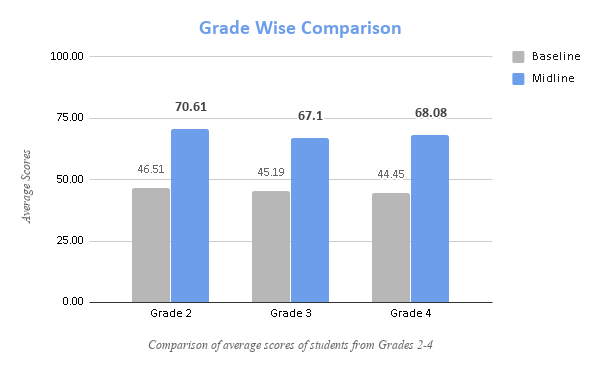 |
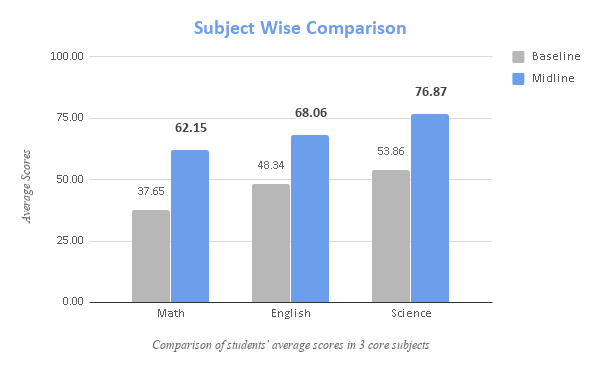 |
Notably, all grades have shown improvements between the baseline to midline period. The graph shows the grade-wise average scores of all schools. The percentage of improvement was impressive in midline survey, in comparison to the baseline score. There has been an average improvement of 24.10% in grade 2, 21.92% in grade 3 and 23.63% grade 4 from baseline to midline.
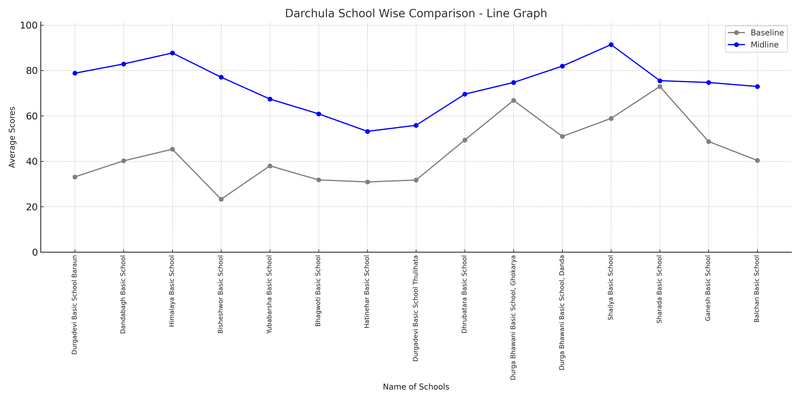
As the graphs indicate, student performances in all schools have increased significantly. Durgeshwari Basic School (BS), Baraun has shown significant improvement from 33.14 % to 78.80 % from baseline to midline survey, whereas Balichan BS decreased in performance of around 8% in students learning. Dandabag BS, Himalaya BS, Yubabarsha BS and Bisheshwor BS have shown more than 30% percent of increment in students learning performance in one year.
The digital literacy program in these schools has been running smoothly and has generated interest amongst students and teachers. It has helped ensure that each student gets to learn at his or her own pace.
Conclusion:
The comparison of baseline and midline survey results revealed that students have made an impressive improvement in learning English, science and mathematics. Though we are aware that many factors contribute to the improvement in student learning, students were able to learn concepts at a pace that would not have been possible with the traditional way of learning. As the findings indicate, student performances in all schools in three classes’ subjects have increased significantly and digital literacy program has shown positive impact on student performance. We can claim that effective integration of digital materials in the classroom practices will enhance student learning and lead to better results in future.
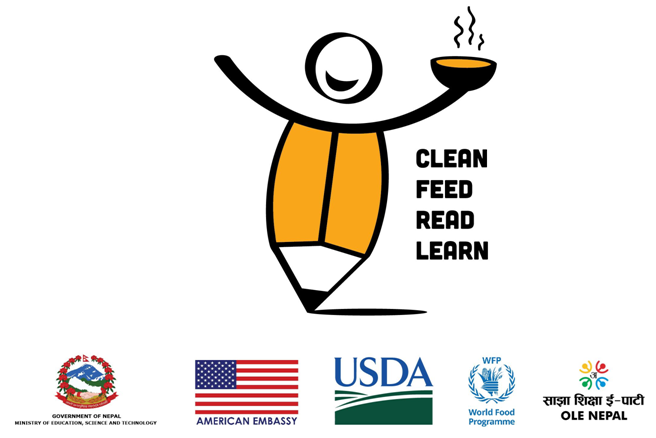 |
The laptop program in Darchula was launched in partnership with World Food Programme, under their School Meals Programme, which is supported by the United States Department of Agriculture (USDA), through the McGovern-Dole International Food for Education and Child Nutrition grant. |